By Valentin Chesneau-Daumas
The different eras of architecture in the USSR
The Soviet era witnessed a number of important architectural movements, each distinct from the next. It all began in 1922, when the Union of Soviet Socialist Republics was proclaimed in Moscow. Around the Russian Soviet Federative Socialist Republic, the USSR brought together various republics that were more or less under its influence, but whose development was often less advanced than that of Russia. The reality of the demographic and infrastructural situation in all four corners of the country gave rise to a need for buildings with simple, efficient forms: this was constructivism. Build quickly, with cubic forms, to respond effectively to the demand for housing and the living spaces that go with it.
In the years following Stalin’s accession to power in 1922, it was decided that the Union’s cities would be organized and built with simplicity and rationality in mind. Architecture was first and foremost political, and thus accompanied urban development. Imposing, original buildings with neo-Gothic, neoclassical or Art Deco influences were created, and the term “Stalinism” came to the fore.
The end of the war, the need to rebuild and the arrival in power of Nikita Khrushchev in 1953 and Leonid Brezhnev in 1964 brought a break with Stalinist architecture. The so-called modernist movement was born, with clear influences from Brutalism. Brutalism was born around the same time in the “West”, with architects such as Le Corbusier and Ludwig Mies van der Rohe. These movements have much in common, and place architecture at the mercy of geometric lines, where excess decoration is outlawed. The foundation pillars are the architectural and visual basis of these buildings, and the volumes are often impressive, the forms original and varied. The interior is linked to the exterior by large glazed openings, with intermediate air spaces acting as a link between the internal and external spaces.
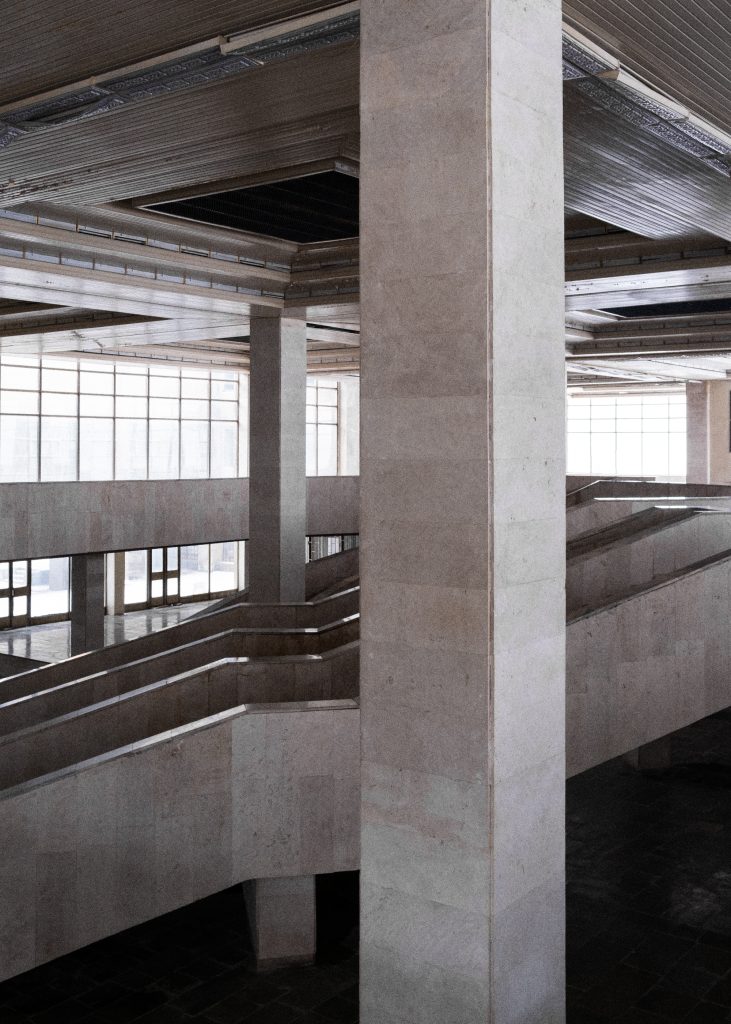
Foundation pillars of the northern bus station, Yerevan
Soviet architecture in Armenia
Armenia is a former country of the USSR, and its capital Yerevan is a Soviet city, proudly displaying its heritage. The city is indeed not free from Moscow’s influence, and many buildings and structures were erected up until the fall of the Union and the country’s independence. Buildings serving a public or governmental function are almost always architectural works of art, displaying a full range of different eras and styles. Alexandre Tamanian was the perfect representative of the pure Stalinist style, while retaining an inspiration and respect for Armenian traditions, for example by using tuff, a volcanic stone abundant in the country, as the basis for the construction of most Armenian buildings since time immemorial. It was he who designed the city of Yerevan in the 1920s and 1930s. The Government Palace and Yerevan railway station are ideal examples of the Tamanian style, which won the USSR State Prize for Architecture in 1942.
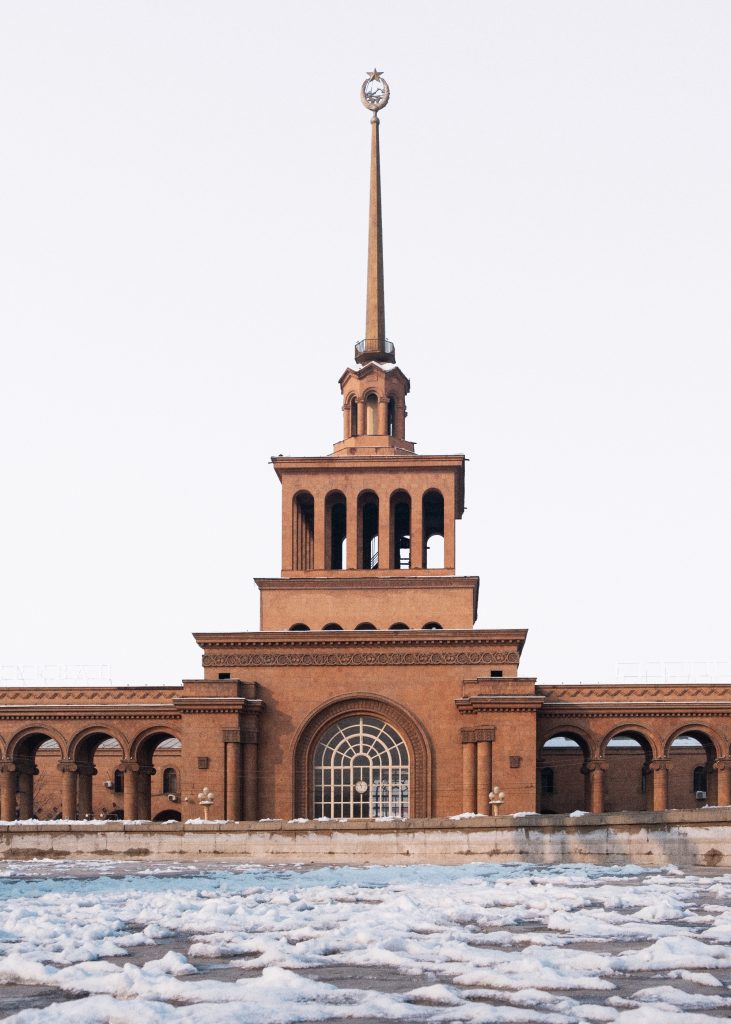
Yerevan train station, stalinism architecture
In the second half of the Union’s existence, the modernist style took hold in the country as elsewhere. The monotony of the urban landscape was decried, and there was an urgent need to build original living spaces such as the northern bus station or the Yeritasardakan metro station, as well as more decorative elements such as the famous parasol bus shelters found throughout Armenia, the iron fountain in Gyumri or the “welcome” constructions in the shape of seagulls and traditional Armenian motifs on the road from Sevan to the north of Yerevan.
The works of the 2000s, serial destruction
Armenia is newly independent, and like all major cities, its capital is looking to the world. Major construction projects were undertaken everywhere, and many buildings were demolished. Among them was the famous “corncob” youth palace in the heights of Yerevan, which was a dynamic, modern venue with a revolving restaurant at the top. It was demolished in 2004 after an oligarch bought the land, making way for new urban projects, including a hotel. For lack of funding, the area is now a wasteland surrounded by palisade fences, where nothing has moved in all these years. There’s also the case of the circus, where an attempt at renovation was initiated in 2011, but the argument of the original quality of the building materials was put forward and the destruction then reconstruction of a new building was preferred. As a result, many architecturally interesting buildings from the Soviet era, and particularly from the Brutalist period, have disappeared from the Armenian landscape, a fact that is considered regrettable by the architectural society, whose voice has clearly not been heard enough over the years.
Renewed interest from the old “West”?
According to Armenian architect and theorist Tigran Harutyunyan, an interest in Soviet architecture, and particularly Brutalist architecture, emerged in the 2010s. It all began in 2012, when Austria’s National Museum of Architecture presented an exhibition devoted to these masterpieces. The exhibition caused quite a stir and was the start of a reconciliation movement, creating real interest in the Brutalist style among the general public in Western European countries. At the same time, in 2013, French photographer Frédéric Chaubin published his book CCCP, Cosmic Communist Constructions Photographed – published by Taschen. According to Tigran Harutyunyan, these two elements were the catalyst for a movement to promote and preserve Soviet buildings.
For a number of years now, social networking sites have been abuzz with accounts promoting and praising this architectural style, almost exotic in the eyes of a European society surely too accustomed to the styles traditionally found in the cities of the former Western bloc. Other examples include the documentary series “Urbex Rouge”, published by ARTE to mark the 30th anniversary of the fall of the Berlin Wall, and the emergence of numerous books, blogs and websites devoted exclusively to Soviet architecture. Not to be outdone, Yerevan has its own architectural guide, published by Tigran Harutyunyan, “Architectural guide – Yerevan” by DOM, and interest is such that issue number two is currently in preparation.
From the old “West” to the old “East
In the former Soviet Union, fascination with the modernist architecture of the last forty years of the USSR was not long in coming. Numerous scientists and academics have taken an interest in this period, including Boris Chukhovich, an Uzbek historian who has worked on Tashkent modernism, and Anna Bronovistkaya, who has written a book dedicated to modernism in Moscow and St. Petersburg. In Armenia, Karen Balyan is undoubtedly the conductor of the memory of Armenian modernist architecture.
Associations have sprung up in Armenia, promoting the preservation of these architectural jewels, fighting against their destruction and going as far as their rehabilitation. Voices from the Armenian architectural and art society, such as critic and art historian Ruben Arevshatyan, have been raised, denouncing the enormous cultural interest they represent. Take, for example, the case of the former Zvartnots airport terminal, which is being saved from destruction in 2019 after being closed in 2011. Eduardo Eurnekian, the airport’s owner, announced that he was working with the government to save and develop the old buildings. The terminal and the old control tower are still standing, but totally derelict.
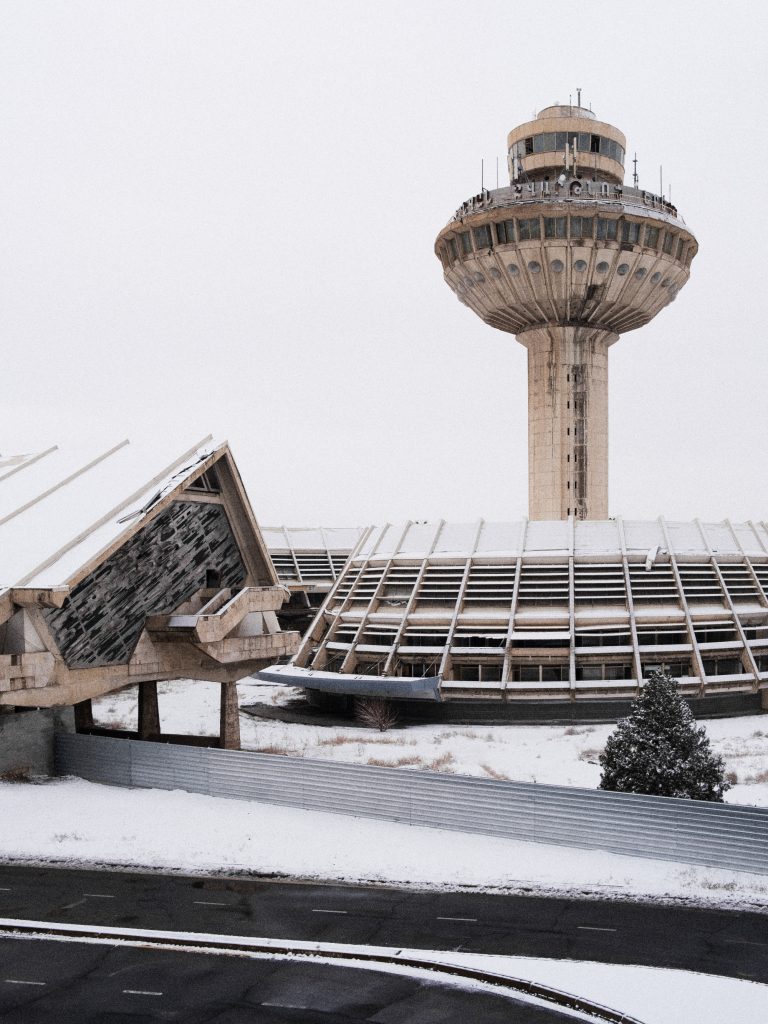
Former Yerevan airport terminal
The story of Yerevan’s old open-air cinema, subtly built in 1964 in a space that should have been, or could have been, empty, behind the Moskva cinema, is another example of this preservation drive. Its open-air bleachers are the epitome of Armenian modernism, with their very raw forms and exposed pillars, blending perfectly into the narrow urban space while at the same time-serving as the capital’s lively hub. In 2010, the Armenian government removed the building from the national list of Armenia’s cultural and historical heritage. The plan is to demolish the building and rebuild a church, as was the case until the beginning of the 20ᵉ century. Thanks to the mobilization of the Urban Lab think tank, and the signing of their petition widely relayed on Facebook, the open-air hall has been saved, and is so far still standing.
Armenian modernism: the unloved now recognized in Armenia
Today, it’s undeniable that iconic buildings have taken their place in the Armenian landscape and collective memory, although some have been completely abandoned. We can imagine that in today’s economic reality, they no longer meet needs, as is the case with the airport, or the gigantic bus station in the north, half-abandoned, far from the center, from which only a few shuttles leave each day. This transport hub was built at a time when Armenia was much better connected to its neighbors by road, and the private car did not yet occupy the dominant position it does today.
If these buildings are still standing, it’s undeniably thanks to their rich cultural and architectural interest, and to a place that seems to have been growing in the hearts of the Armenian people for some years now: these symbolic buildings occupy a prime position in the representation of a collective memory, and are undoubtedly the icons of an era. In 2015, for the 100th anniversary of the Armenian Genocide, Google integrated the famous Tsitsernakaberd memorial monument, designed by Arthur Tarkhanyan and Sashur Kalashyan, into its banner and thus helped make this building iconic in the eyes of the world. Other, smaller structures are now mere pieces of concrete, blending into the backdrop of a rapidly expanding urban Armenia, such as the original seagull monument designed by Feniks Darbinyan on the H1 road at the entrance to Yerevan, and many smaller structures throughout the country.

Google banner for the 100th anniversary of the genocide in 2015
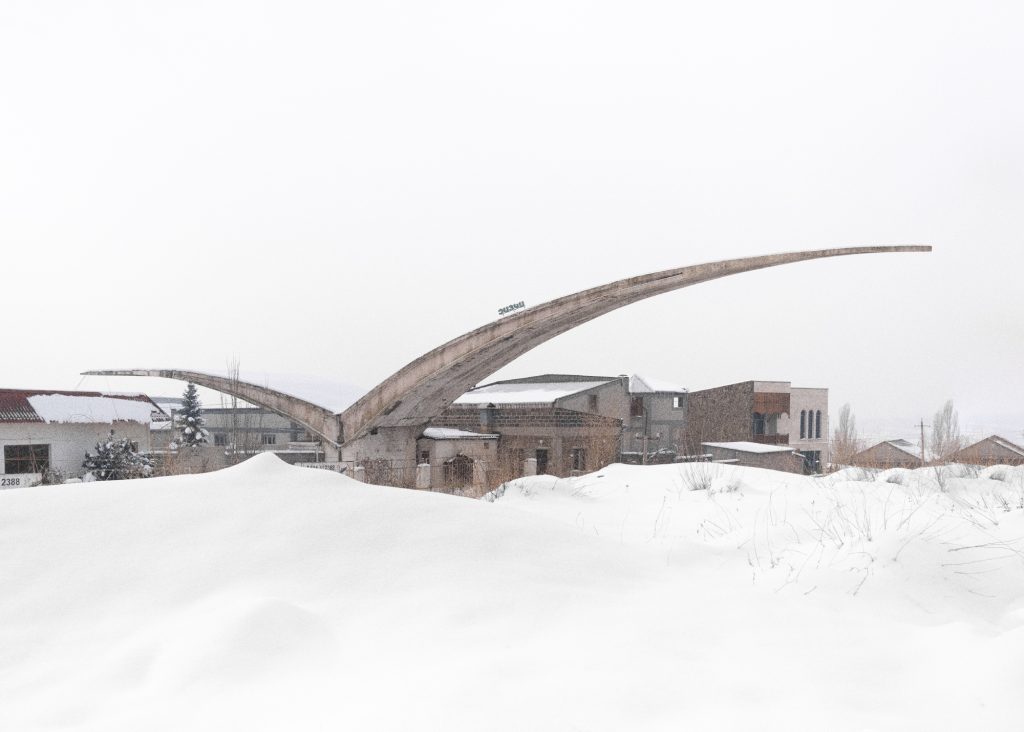
Seagull monument at the entrance to Yerevan
One of the architects of the Youth Palace, Hrach Poghosyan, told French researcher Paul Wolkenstein that he dreamed of seeing his building rebuilt. A feeling of regret over the disappearance of certain emblematic buildings seems to pervade Armenian memory, as was the case in Georgia after the wave of destruction under Saakashvili. Unlike most other former EU member states, Armenia is a more limited financial power, which makes investing in architectural projects and safeguarding existing ones far more complicated. According to Paul Wolkenstein, this lack of funding has had, and continues to have, a beneficial effect on the preservation of Soviet architectural heritage. In the end, Armenia was able to safeguard a large part of its heritage through various mechanisms.
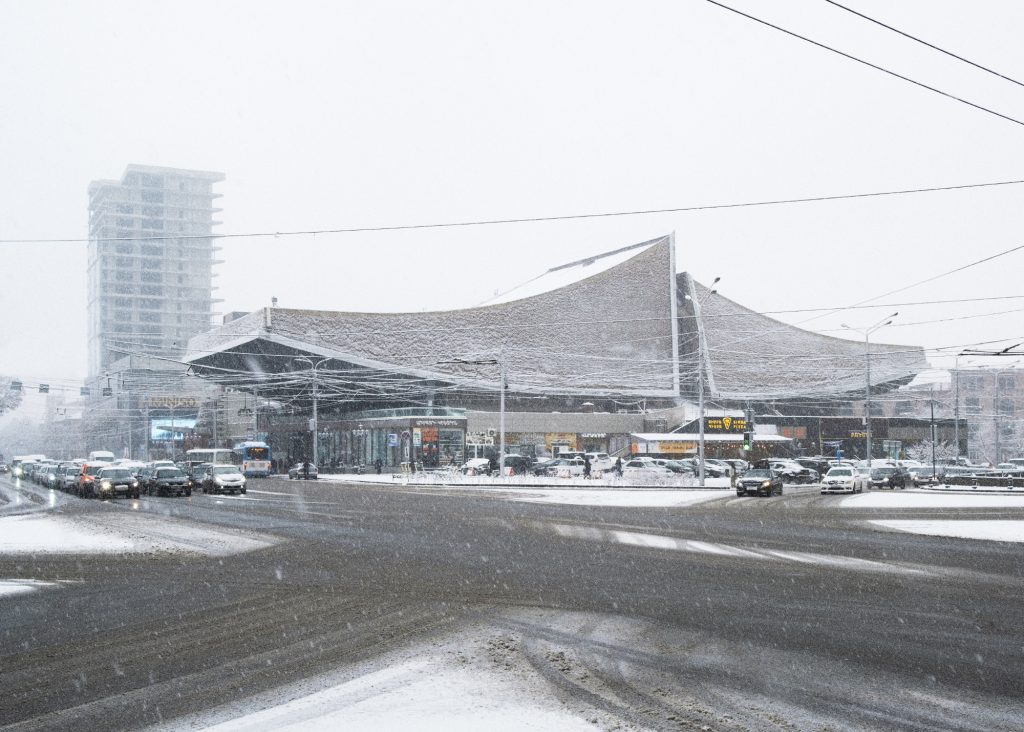
Shopping mall formerly Rossiya cinema, Yerevan
Although it is obvious that the financial issue is largely at play, it is legitimate to ask why save these buildings if no rehabilitation is undertaken behind them, and thus their primary function – as places to live in – is not respected?
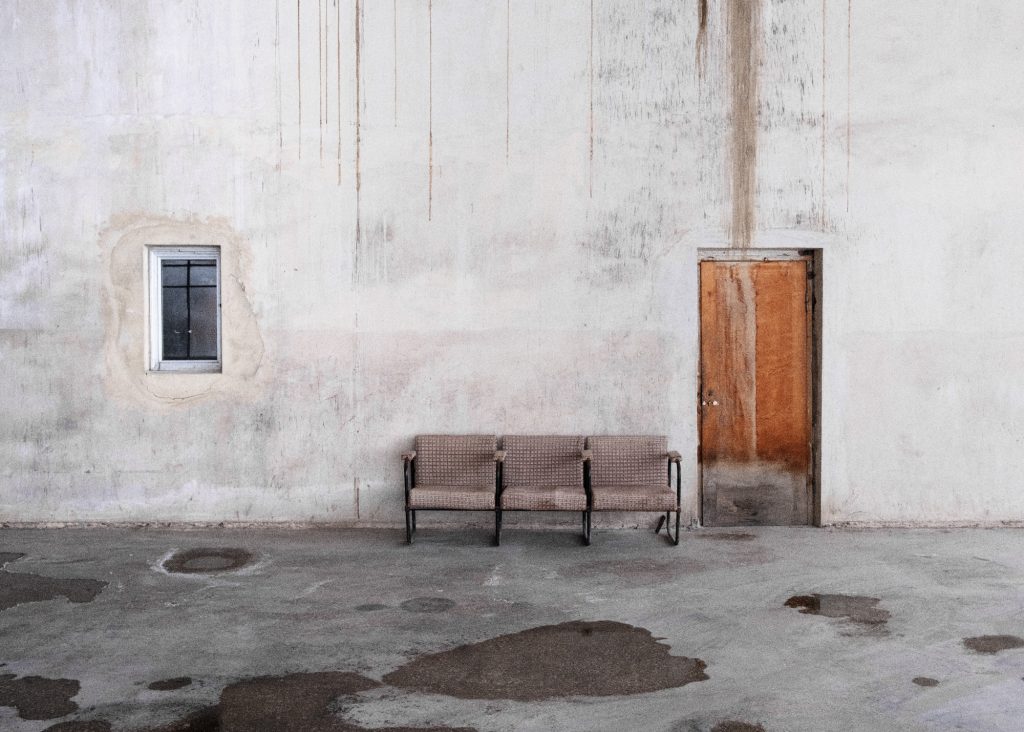
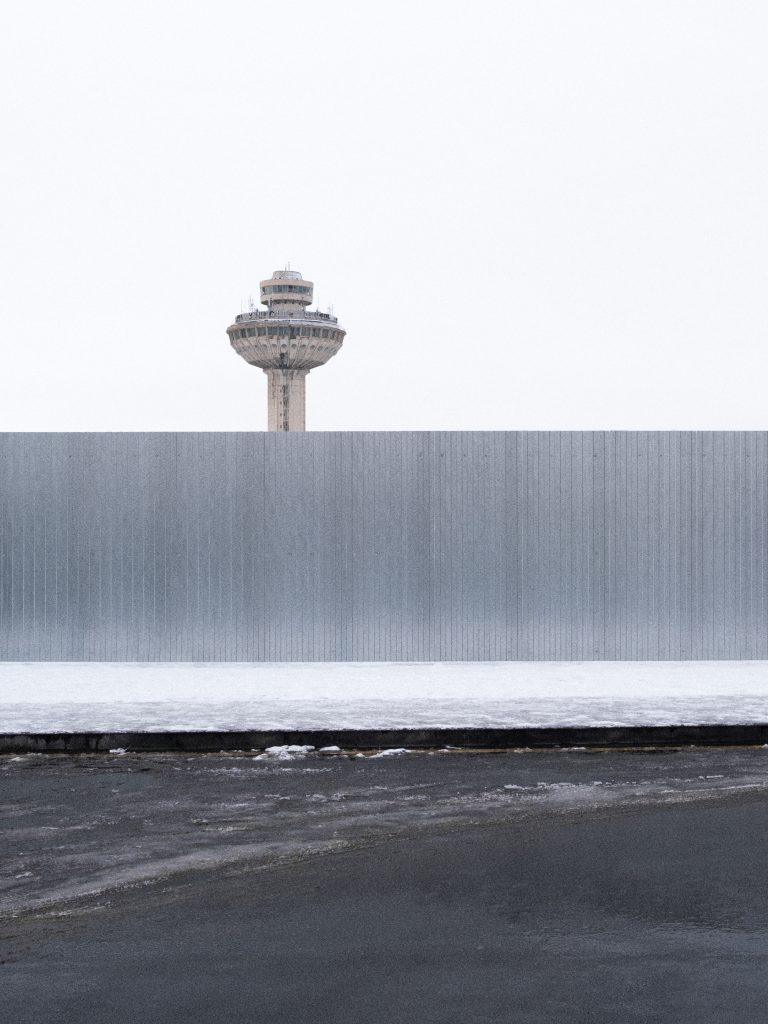
Inside Yerevan’s northern bus station (left) / Former Zvartnots control tower behind palisades (right)
The post Armenia and its Soviet architectural heritage appeared first on CIVILNET.